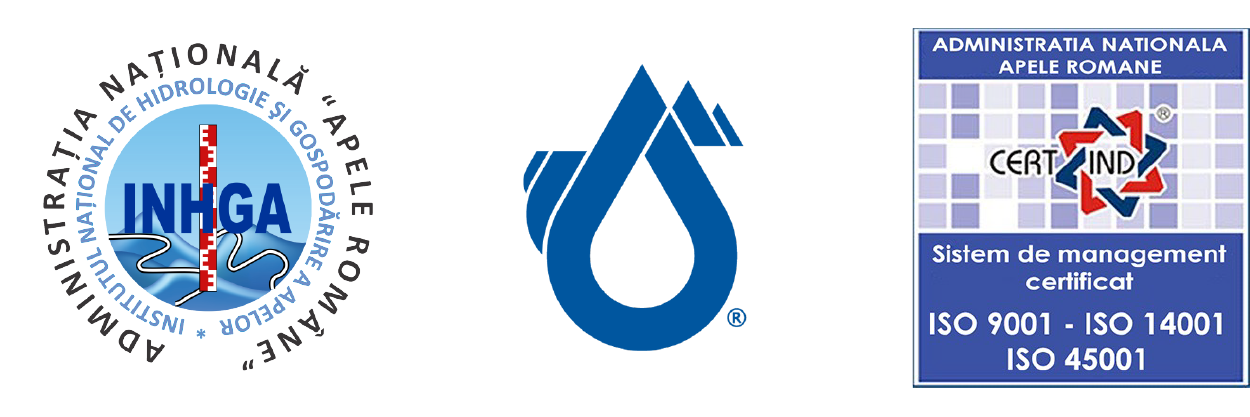The Romanian Hydrographic Service was established on January 1 st , 1925 within the General Directorate of Waters of the Ministry of Public Works, led by General Traian Moşoiu, in the government led by Ion I. C. Brătianu. The establishment of the Romanian Hydrographic Service is the result of the application of the “Law on the water regime” adopted by the Romanian Parliament in 1924, and published in the Official Gazette no. 137 of June 27, 1924.
The water law was elaborated by a commission, or as it is called today, a working group composed of parliamentarians, lawyers and specialists, including Elie Radu, Dimitrie Leonida, Alexandru Davidescu.
The need for this law was generated, among other things, by the fact that on the territory of Romania as a whole, there were different regulations in the field of water, some with divergent provisions. On the other hand, the year 1924 marks the beginning of the relative consolidation of capitalism in Romania, and therefore a growing interest in the use of water potential, especially hydropower. As a result, institutional adaptation was needed, that is, adequate legislation and structures. The "Water Law" and later the "Energy Law" are drafted and adopted as legislation.
As structures, the “Superior Council of Waters” is established as an advisory body in the field, and the Romanian Hydrographic Service, a service that takes over the responsibilities in the field of hydrometry, hydrography and hydrology.
As a result of the activity of this service, the number of hydrometric stations increases and the number of measurements reaches 208. In 1931, a difficult period follows, of about 15 years, in which the number of tide gauges is significantly reduced, and the number of measurements is almost zero.
After the Second World War, the remaining hydrometric network began to be rebuilt, gradually, in 1948 the number of stations reaching 220 on the inland rivers, and 22 on the Danube River.
One of the most renowned specialists who led the Romanian Hydrographic Service, and who elaborated the first plans to modernize the national hydrological service, was the engineer Ion Vladimirescu.
The introduction of the planned economy, the elaboration and approval on October 27, 1950 of the plan for the electrification of the country, and the use of the waters of the Romanian People's Republic, impose other institutional arrangements. As a result, in 1951, the General Hydrometeorological Directorate (G.H.D.) is established, which also takes over the attributions of the Romanian Hydrographic Service, and is the one that lays the foundations of hydrology in Romania, as its own science.
The National Institute of Hydrology and Water Management is considered at least in part, as one of the successors of the Romanian Hydrographic Service. Its year of birth is 1956, when by the establishment of the State Water Committee (S.W.C.), the units of the hydrological sector of the G.H.D. are included in the Institute of Hydrotechnical Studies and Research (I.H.S.R.) under the auspices of the C.S.A., and since 1970, at the Institute of Meteorology. The Institute of Meteorology and Hydrology (I.M.H.) is thus formed.
With the dissolution of the State Water Committee in 1969, the new institute is subordinated to the Department of Land Improvement and Water Management, a body within the Ministry of Agriculture.
In 1971, the Ministry of Agriculture established the National Water Council, whose president became a member of the Council of Ministers. As a result, the Institute of Meteorology and Hydrology is subordinated to this new body. It functioned until 1990, when the National Water Council became a ministry, bearing various names: Ministry of Water, Forests and Environment, Ministry of Environment, Ministry of Water, Forests and Environmental Protection, Ministry of Environment and Water Management, Ministry of Environment and Sustainable Development, Ministry of Environment and Forests, etc.
In 1998, the National Institute of Meteorology and Hydrology added a design component in the field of water management. The National Company Institute of Meteorology, Hydrology and Water Management thus forms. Since 2002, the components of hydrology and water management form a new structure, the National Institute of Hydrology and Water Management (N.I.H.W.M.) under the coordination of the National Administration "Romanian Waters".
About the beginnings of hydrology in Romania:
1838 - The first hydrometric station is established at Orsova on the Danube It is followed by Radna (Mures) - 1853, Drencova (Danube) -1854, Savârsin (Mures) - 1859, Arad (Mures) - 1861.
By 1930, the hydrometric network reached 250 stations. During this period the observations and measurements were not organized, and consisted mainly of measuring the levels.
1925- The Hydrographic Service of Romania is established, which performs water flow measurements, but interrupted in 1933.
Between 1951 and 1955, the foundations of modern hydrology were laid, by the establishment of the General Hydrometeorological Directorate and by the resumption of measurements.
In the period 1953-1956, but especially after 1960, the intense construction of the basic network for groundwater begins.
1957 the first organizational form of the current Institute is established, by reuniting the research teams in the fields: hydrology, hydraulics, foundations and water quality within the Institute of Hydrotechnical Studies and Research (IHSR).
1970 IHSR's hydrometry, hydrology and groundwater departments are attached to the newly established Institute of Meteorology and Hydrology (IMH).
1998 The National Institute of Meteorology and Hydrology receives in its structure also the conception component in the field of water management.
2002 - as a result of the reorganization of the administrative structure of water management, the components of hydrology and water management are established in the National Institute of Hydrology and Water Management, under the authority of the National Administration "Romanian Waters".
